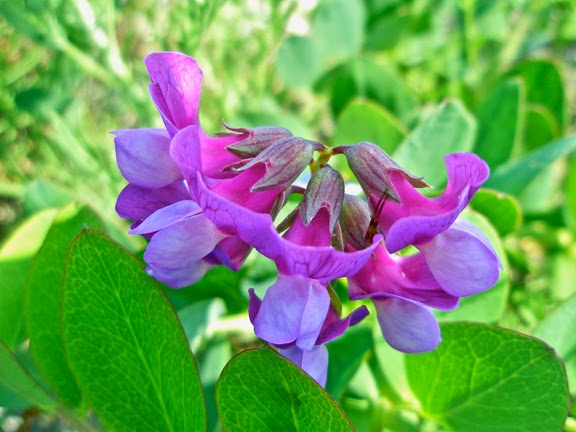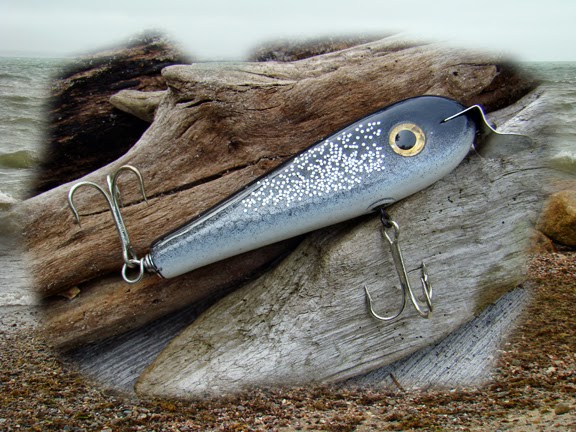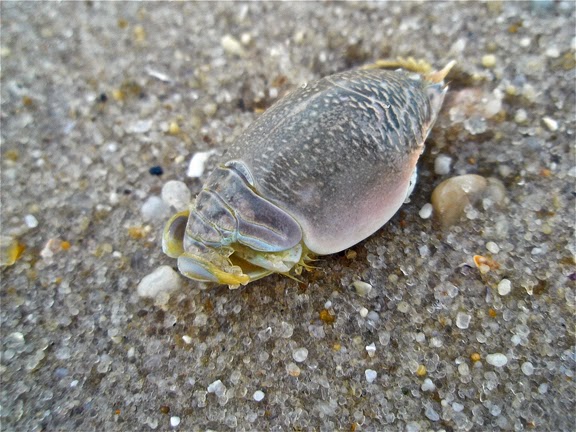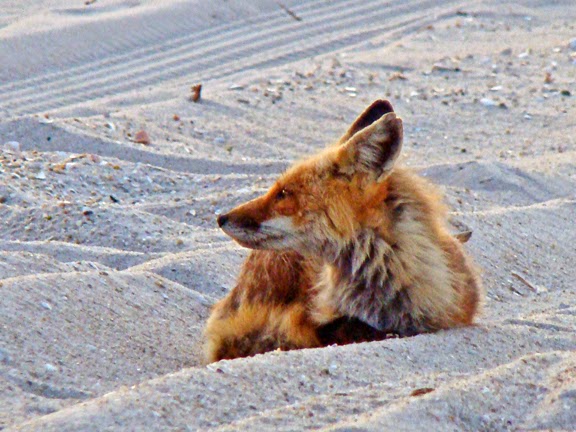Trumpet vines also grow through the trees and along the edges of parking lots on Island Beach State Park. My guess is that they are escapees from the governor's house or judge's shack, or one of the other places that served as residences in the past.
The beach roses are especially lovely. They survive growing in sand with the salt spray and strong ocean winds constantly buffeting them. It goes to reason that they would be sturdy and have some of the most effective thorns I've ever seen. They are normally either white of pinkish red, and the perfume from the flowers is carried a long way on the breezes - what a heavenly scent!
The two images below are of the Marsh Pea. They, like the roses, are a hardy breed growing in sand and the tough conditions of the seashore, but they can also be found in sandy or gravely areas inland. They are vines and grow on neighboring plants or other available support; the gorgeous flowers bloom in the summer months. Although I've seen instructions on how to prepare these for eating, I've also read that the seeds are poisonous when eaten in any amount - smart thing to do? Don't eat the seeds! Enjoy the lovely flowers:>)
Dragonflies and damselflies are common near and on the beach - there are plenty of mosquitoes and flies for them to eat, and they do a great job. I wish there were more of them and they ate more annoying bugs, but I'll take what I can get.
This blog post won't do what I want it too - yes, I'm whining! I'll try to get around it by telling you what the pictures below represent. Damselflies are often mistaken for tiny dragonflies, but they are different. One way to quickly tell if what you see is a damselfly is to look at how they fold their wings. Look at the 3rd picture down (damselfly) and you'll see the wings are held down and along the "back". Dragonflies have a variety of ways they hold their wings - outstretched, downward, upward, but they don't hold them like damselflies.
http://www.insectidentification.org/dragonflies-and-damselflies.asp
First - probably a Blue Dasher type of dragonfly - love those turquoise eyes:>)
Second - Eastern Pondhawk Dragonfly
Third - a pretty golden colored damselfly
Fourth - a lovely yellow dragonfly I haven't identified
Fifth - Slaty Skimmer Dragonfly
Sixth - Widow Skimmer Dragonfly
Seventh - another Eastern Pondhawk
There are a number of types of butterflies and moths that frequent the beaches. Monarchs have flyways on their migrations that included shore locations, and Island Beach State Park had (may still have) a program to capture, band, and release the butterflies. We see them and also see many Red Admirals. The picture below is a Red Admiral resting on the sand after flying in from over the ocean.
Even in the fall and winter there is beauty to be found. Solidago is a name for goldenrods - there are over 100 kinds of goldenrod, and those living at the oceans edge are usually more succulent in appearance than those in meadows and fields. This plant hasn't begun blooming yet.
Virginia Creeper is a vine we find commonly growing on the dunes. It's also a familiar sight inland, and it is a beautiful vine. The pretty leaves are a beautiful green in the summer, then turn a gorgeous red in autumn. The berries are blue and much-loved by wildlife. The first picture is a close up of a vine in one of the parking areas, and the second is a dune fence that serves to keep sand in place alongside Barnegat Inlet. More importantly, it supports a wonderful Virginia Creeper:>)
This is a seed head of a Wild Lettuce plant. It kind of like like a very tall (over five feet) dandelion and the flower is yellow. We see them growing on the bay side of the island.
When winter comes and the wild roses are history, they leave their seeds in the rose hips. Some folks make jelly from them when they are fresher - loads of vitamin C. These are what survived the harsh winter.
Even a mushroom can find a home in the sand. This image is actually from Cape Cod, Massachusetts.
Beach Amaranth is now a threatened species of plant, and the State Park takes steps to protect this treasure.
http://www.fws.gov/northeast/njfieldoffice/pdf/sbanjfact.pdf
Here are four views of the park. First is a dune with native plants; second, a dune fence in winter snow, third, sunsetting behind a dune with beach grass, and fourth, a sunrise in a tidal creek in another New Jersey town where we rent a boat to go crabbing. If you look closely at the very middle of the picture of the creek you'll see a heron at the edge of the muddy shelf.
A word about the beach grass. This rather modest plant does the Herculean job of keeping sand in place during wind, rain, hurricanes, and floods. If it weren't for the dunes being held together by the grasses and helped by other vegetation, I think the park would be mostly gone.
Trash is everywhere and even with all the efforts of the park rangers to keep it clean, visitors insist on leaving their trash on the beach. Each tide also brings in more trash, and the majority of it is plastic. If we want to keep areas like Island Beach State Park a joy for all of us to experience, we need to take care of it. Trash receptacles are provided at every parking area and that includes places to recycle. People who fish should not leave line on the beach. There are special receptacles for dropping in used and cut fishing line. This protects the wildlife. We are so fortunate to have natural areas to explore!
There are a number of pictures left over, so expect another dose of seaside images at some future date. There are quite a few from Island Beach State Park, and I also have pictures from the Outer Banks and Cape Cod. Two postings in a row are probably pushing it (Are you bored yet?), so I'll keep my word and make it only a two-parter:>)
There is an elemental draw to the sea that just about everyone experiences. I encourage people to go to the beach and enjoy that unique habitat. Keep your eyes and ears open; smell the salt air; feel the sand between your toes and the cool ocean on your feet.
I have a tiny, little WOW that I'd love to share - a group of artists on one of the websites I belong to publishes a stunning e-magazine. I was honored to be told they featured me (among others) on pages 72 through 79 - this is a glamorous publication, in my view, and exceedingly well done. I'm so tickled!!!!!
http://issuu.com/gardentripod/docs/garden_tripod_22_#
We'll meet again next week when there will be a different theme. Meantime, travel safely and enjoy!
| 














































































